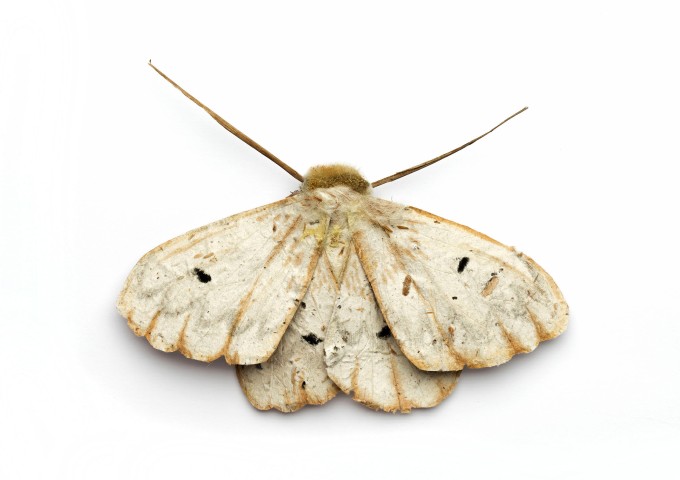This project presents a study of the habitats of moths, based on native species found in the UK.
Although often small in size, their presence has been magnified so that these creatures can be considered in greater detail. In appearance, moths can be closely matched to the landscapes in which they live, as different species will often mimic the patterns, colours and textures of their natural environment. To create the most authentic replicas of these moth species, organic matter has been collected from their natural habitats and then reconstructed through various forms of craft-making. The fabricated models are then photographed on film using a Hasselblad camera, and then presented as specimens. The moths themselves convey all the diversity of their natural environment. By embodying the landscape from which they derive, they demonstrate how dependent a species is on its environment.
This project was made with the help of the Butterfly and Moth Conservation charity.

Straw Dot (Rivula Sericealis)

Rannoch Looper (Itame brunneata)
 Mother of Pearl (Pleuroptya Ruralis)
Mother of Pearl (Pleuroptya Ruralis)

Mottled Beauty (Alcis Repandata)
Green Pug (Pasiphila Rectangulata)

Common Heath (Ematurga Atomaria)

Large Emerald (Geometra Papilionaria)

Small Fan-footed Wave (Idaea Biselata)
Light Emerald (Campaea Margaritaria)

Flame Carpet (Xanthorne Designata)

Little Emerald (Jodis Lactearia)

Clouded Bordered Brindle (Apamea Crenata)
Magpie (Abraxas Grossulariata)

Dark Arches (Apamea Monoglypha)




